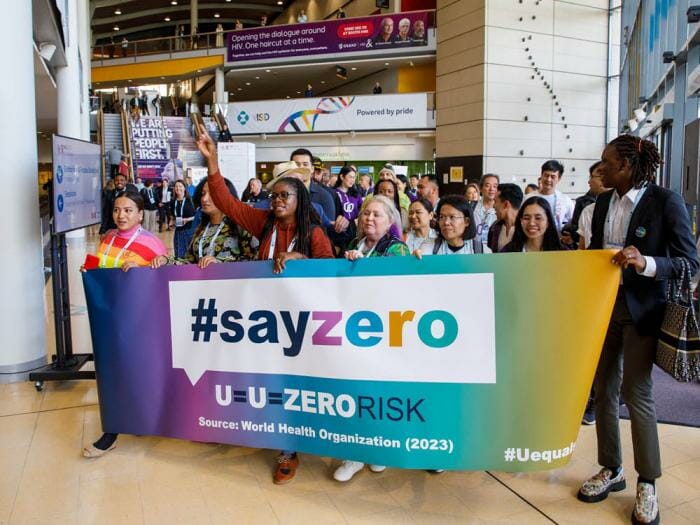New guidance from the World Health Organization (WHO): “People living with HIV who achieve an undetectable level of the virus by consistent use of antiretroviral therapy, do not transmit HIV to their sexual partner.”
We’ve known that Undetectable = Untransmittable for years, but now, WHO has confirmed that Undetectable + Untransmittable = Zero Risk. Not “almost zero,” “effectively zero” or “near zero.” Zero risk. The new guidance comes from the latest data and scientific updates shared at the 12th International International AIDS Society (IAS) Conference on HIV Science.
Simply stated, this means that people diagnosed with HIV, who remain on proper and consistent medication and treatment to keep the HIV virus down to an undetectable level on lab tests, cannot transmit the virus and as a result, carry zero risk of spreading the virus to others.
View this post on Instagram
As long as the person you are having sex with is HIV-positive and undetectable, science tells us that there is zero risk of the virus being passed on to you.
“For more than 20 years, countries all over the world have relied on WHO’s evidence-based guidelines to prevent, test for, and treat HIV infection,” said Dr Tedros Adhanom Ghebreyesus, WHO Director-General. “The new guidelines we are publishing today will help countries to use powerful tools that have the potential to transform the lives of millions of people living with or at risk of HIV.”
According to WHO, at the end of 2022, 29.8 million of the 39 million people living with HIV were taking antiretroviral treatment (which means 76% of all people living with HIV) with almost three-quarters of them (71%) living with suppressed HIV. This means that for those virally suppressed their health is well protected and they are not at risk of transmitting HIV to other people. WHO adds that while this is very positive progress for adults living with HIV, viral load suppression in children living with HIV is only 46% – a reality that needs urgent attention.
In an interview, Micheal Ighodaro, director of global policy advocacy at the Prevention Access Campaign said, “I’m getting married this year to my partner. Just knowing that right now my partner will have zero risk of transmission, we can have sex when we want to have sex, and he has absolutely zero risk of getting infected.”
Karl Schmid, co-founder and executive producer of +Life, a content house dedicated to ending HIV stigma through storytelling says that language is everything. The fact that the medical community at the highest levels now stands by “zero risk,” for those living with undetectable HIV is monumental.
“This is a big step,” Schmid said in talking about the WHO guidance. “We [people living with HIV] have been saying ‘zero risk’ for years.”
While major progress has been made in HIV awareness and innovation, much work remains in dismantling stigma that impacts our community and does so disproportionately.
GLAAD’s State of HIV Stigma study shows that HIV stigma exists in a big way and that a supermajority of Americans agrees. In fact, nearly 9 out of 10 Americans say they are either knowledgeable or feel they know a little about HIV. And, up to 43% of Americans are now comfortable interacting with people living with HIV in various scenarios, compared to 36% in 2020.
This greater comfort must continue to be paired with greater visibility of people living with HIV in the media, including the reality that they live long and healthy lives. GLAAD’s most recent Where We Are on TV 2021-2022 report showed that – despite approximately 1.2 million people living with HIV in the US and despite GLAAD’s challenge to Hollywood to introduce at least three new regular or recurring LGBTQ characters living with HIV each year in scripted primetime broadcast, cable or streaming shows – there were only two characters living with HIV on TV. This marks a decrease from the prior year’s three characters and a significant decrease from the nine characters two years ago.
You can read the full World Health Organization policy brief here.













